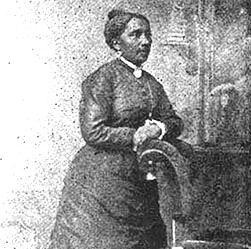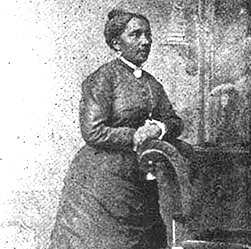
“We are not going back,” is a refrain heard in this year’s election campaign. We like to think of history as steady progress forward. But during the struggle toward human rights and racial justice in the United States, we have gone back more than once.
In July 1854, residents of New York City were suffering through a stifling heat wave. Citizens were sweating. Horses, the main means of transport, were dropping dead in the street. On Sunday morning, twenty-four-year-old Elizabeth Jennings headed out from her parents’ home in lower Manhattan to attend church. She needed to arrive early because she was the organist and choir director.
Wearing her Sunday clothes, Jennings felt even hotter. She grew impatient as she waited along the avenue. Finally, a horse-drawn streetcar came and she climbed aboard. Although the car had plenty of room, the conductor told her she would have to get off. There were special cars reserved for people of her color.
Elizabeth narrowed her eyes at the man. She was the daughter of Thomas Jennings. He ran a large tailor shop in the city. He had invented a form of dry cleaning and received the first patent issued to a person of color. He collected royalties from the process and owned real estate in the city. “I wish to go to church,” Elizabeth told the conductor. “And I do not wish to be detained.”
The conductor called the driver. The two men wrestled Elizabeth to the car’s platform and tossed her headfirst into the street. Bleeding, her face scraped, her ribs injured, the young woman stood, retrieved her hat—and leapt back onto the car.
“I am a respectable person,” she declared. This time, the conductor told the driver to continue on without stopping until he saw a policeman. When he did, the cop climbed aboard and told Elizabeth to get off. She had no choice.
The incident did not end there. News of Jennings’ treatment flashed through the African American community in the city. Her father, who had long advocated fair treatment for Blacks, engaged a law firm to sue the streetcar company. The case was tried in February 1855.
The judge was inclined to dismiss the matter, but Jennings’ lawyer cited state laws that specifically made a streetcar company liable for the actions of its employees. A jury of white men found in Jennings’ favor. She had sued for $500, the judge awarded her $225. Because of the case, public transit in New York was on its way to becoming completely desegregated.
All to the good. Access to transportation is a basic need of every citizen. The very word “omnibus,” as the early conveyances were called, meant “for all.” Now we refer to them simply as buses. The right of everyone to ride on them has long been a point of racial discord.
Like her father, Elizabeth Jennings stood up for her race. At a time when slavery was still protected by law throughout the South, she had become a schoolteacher. Later in her life, she started the first kindergarten for Black children. Years into the future, African American citizens in New York observed “Elizabeth Jennings Day” to celebrate her courage. She was the first freedom rider.
The Civil War, at great cost, eliminated slavery and established rights for Blacks. But with the failure of reconstruction in 1877, we went back. The situation continued to deteriorate during the decades ahead.
In 1892, Homer Plessy was arrested for entering a whites-only car of a train on the Eastern Louisiana Railway. When his case came to the Supreme Court two years later, the justices ratified government-sanctioned discrimination. Their edict would remain the law of the land for sixty years, the Jim Crow era.
In 1954, in the Supreme Court case Brown v. Board of Education, the Plessy decision was reversed. The judgment set the stage for a long process that undid discrimination in schools, on public transportation, and eventually in all areas of civic life.
It didn’t come easily. In 1955, Rosa Parks famously refused to give up her seat on a Montgomery, Alabama, bus. The event, a replay of Elizabeth Jennings’ courageous action, was the beginning of the civil rights movement that put in place major changes during the 1960s. But those advances, too, have been threatened.
A statue of Rosa Parks now resides in the nation’s Capitol. A section of Park Row in New York City has been renamed Elizabeth Jennings Place. But we have to consider how many Black girls and boys had their dreams thwarted in the century that separated the two women’s actions. And we have to consider, how long will the current progress last?
Originally published on Jack Kelly’s Talking America.

